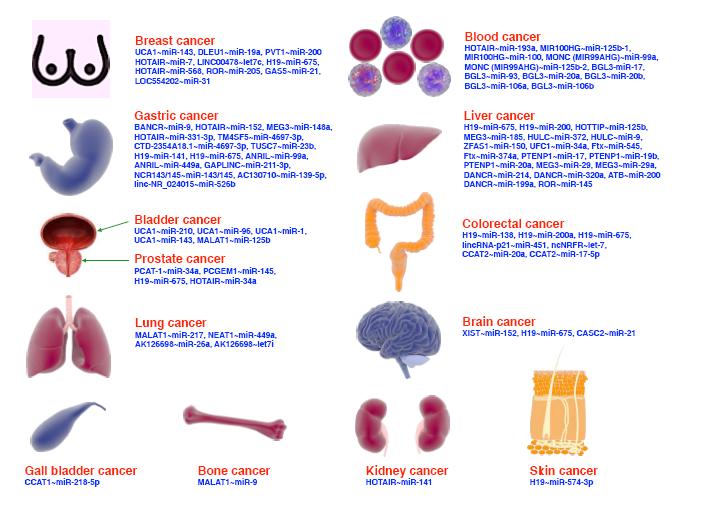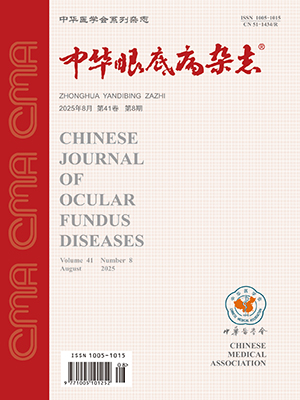| 1. |
惠延年. Retinitis pigmentosa: 术语与炎症. 中华眼底病杂志, 2023, 39(6): 494-495. DOI: 10.3760/cma.j.cn511434-20230512-00231.Hui YN. Retinitis pigmentosa: terminology and inflammation. Chin J Ocul Fundus Dis, 2023, 39(6): 494-495. DOI: 10.3760/cma.j.cn511434-20230512-00231.
|
| 2. |
朱青, 李亚, 游雅, 等. PCDH15基因复合杂合新突变致无色素性视网膜色素变性表型的1F型Usher综合征一家系[J]. 中华眼底病杂志, 2021, 37(6): 444-448. DOI: 10.3760/cma.j.cn511434-20200928-00473.Zhu Q, Li Y, You Y, et al. Novel compound heterozygous mutations in the PCDH15 gene in a family affected with Usher syndrome type 1F with retinitis pigmentosa sine pigmento[J]. Chin J Ocul Fundus Dis, 2021, 37(6): 444-448. DOI: 10.3760/cma.j.cn511434-20200928-00473.
|
| 3. |
冯月兰, 李宁东. 纤毛功能障碍与视觉发育相关疾病的关系研究现状[J]. 中华眼底病杂志, 2020, 36(8): 652-656. DOI: 10.3760/cma.j.cn511434-20190213-00044.Feng YL, Li ND. Research status of ciliary dysfunction and visual development related diseases[J]. Chin J Ocul Fundus Dis, 2020, 36(8): 652-656. DOI: 10.3760/cma.j.cn511434-20190213-00044.
|
| 4. |
Sun C, Zhou J, Meng X. Primary cilia in retinal pigment epithelium development and diseases[J]. J Cell Mol Med, 2021, 25(19): 9084-9088. DOI: 10.1111/jcmm.16882.
|
| 5. |
Takahashi VKL, Xu CL, Takiuti JT, et al. Comparison of structural progression between ciliopathy and non-ciliopathy associated with autosomal recessive retinitis pigmentosa[J]. Orphanet J Rare Dis, 2019, 14(1): 187. DOI: 10.1186/s13023-019-1163-9.
|
| 6. |
Richards CS, Bale S, Bellissimo DB, et al. ACMG recommendations for standards for interpretation and reporting of sequence variations: Revisions 2007[J]. Genet Med, 2008, 10(4): 294-300. DOI: 10.1097/GIM.0b013e31816b5cae.
|
| 7. |
Melluso A, Secondulfo F, Capolongo G, et al. Bardet-Biedl syndrome: current perspectives and clinical outlook[J]. Ther Clin Risk Manag, 2023, 19: 115-132. DOI: 10.2147/TCRM.S338653.
|
| 8. |
陶天畅, 王蕾, 崇伟华, 等. Bardet-Biedl综合征一例[J]. 中华实验眼科杂志, 2019, 37(1): 28-29. DOI: 10.3760/cma.j.issn.2095.0160.2019.01.006.Tao TC, Wang L, Chong WH, et al. A case of Bardet Biedl syndrome[J]. China J Exp Ophthalmol, 2019, 37(1): 28-29. DOI: 10.3760/cma.j.issn.2095.0160.2019.01.006.
|
| 9. |
Nishimura DY, Fath M, Mullins RF, et al. Bbs2-null mice have neurosensory deficits, a defect in social dominance, and retinopathy associated with mislocalization of rhodopsin[J]. Proc Natl Acad Sci USA, 2004, 101(47): 16588-16593. DOI: 10.1073/pnas.0405496101.
|
| 10. |
Barnes CL, Malhotra H, Calvert PD. Compartmentalization of photoreceptor sensory cilia[J/OL]. Front Cell Dev Biol, 2021, 9: 636737[2021-02-04]. https://pubmed.ncbi.nlm.nih.gov/33614665/. DOI: 10.3389/fcell.2021.636737.
|
| 11. |
Wensel TG, Potter VL, Moye A, et al. Structure and dynamics of photoreceptor sensory cilia[J]. Pflugers Arch, 2021, 473(9): 1517-1537. DOI: 10.1007/s00424-021-02564-9.
|
| 12. |
Gupta N, D'Acierno M, Zona E, et al. Bardet-Biedl syndrome: the pleiotropic role of the chaperonin-like BBS6, 10, and 12 proteins[J]. Am J Med Genet C Semin Med Genet, 2022, 190(1): 9-19. DOI: 10.1002/ajmg.c.31970.
|
| 13. |
Jin H, White SR, Shida T, et al. The conserved Bardet-Biedl syndrome proteins assemble a coat that traffics membrane proteins to cilia[J]. Cell, 2010, 141(7): 1208-1219. DOI: 10.1016/j.cell.2010.05.015.
|
| 14. |
尉慧, 樊玉, 孙岳, 等. 16号染色体父源单亲二倍体致Bardet-Biedl综合征1例[J]. 中华眼底病杂志, 2022, 38(5): 403-404. DOI: 10.3760/cma.j.cn511434-20210813-00437.Yu H, Fan Y, Sun Y, et al. A case of Bardet Biedl syndrome caused by parental diploid of chromosome 16[J]. Chin J Ocul Fundus Dis, 2022, 38(5): 403-404. DOI: 10.3760/cma.j.cn511434-20210813-00437.
|
| 15. |
Hartill V, Szymanska K, Sharif SM, et al. Meckel-Gruber syndrome: an update on diagnosis, clinical management, and research advances[J/OL]. Front Pediatr, 2017, 5: 244[2017-11-20]. https://pubmed.ncbi.nlm.nih.gov/29209597/. DOI: 10.3389/fped.2017.00244.
|
| 16. |
Seo S, Guo DF, Bugge K, et al. Requirement of Bardet-Biedl syndrome proteins for leptin receptor signaling[J]. Hum Mol Genet, 2009, 18(7): 1323-1331. DOI: 10.1093/hmg/ddp031.
|
| 17. |
Guo DF, Cui H, Zhang Q, et al. The BBSome controls energy homeostasis by mediating the transport of the Leptin receptor to the plasma membrane[J/OL]. PLoS Genet, 2016, 12(2): e1005890[2016-02-29]. https://pubmed.ncbi.nlm.nih.gov/26926121/. DOI: 10.1371/journal.pgen.1005890.
|
| 18. |
Gao S, Zhang Q, Ding Y, et al. Molecular and phenotypic characteristics of Bardet-Biedl syndrome in Chinese patients[J]. Orphanet J Rare Dis, 2024, 19(1): 149. DOI: 10.1186/s13023-024-03150-9.
|




